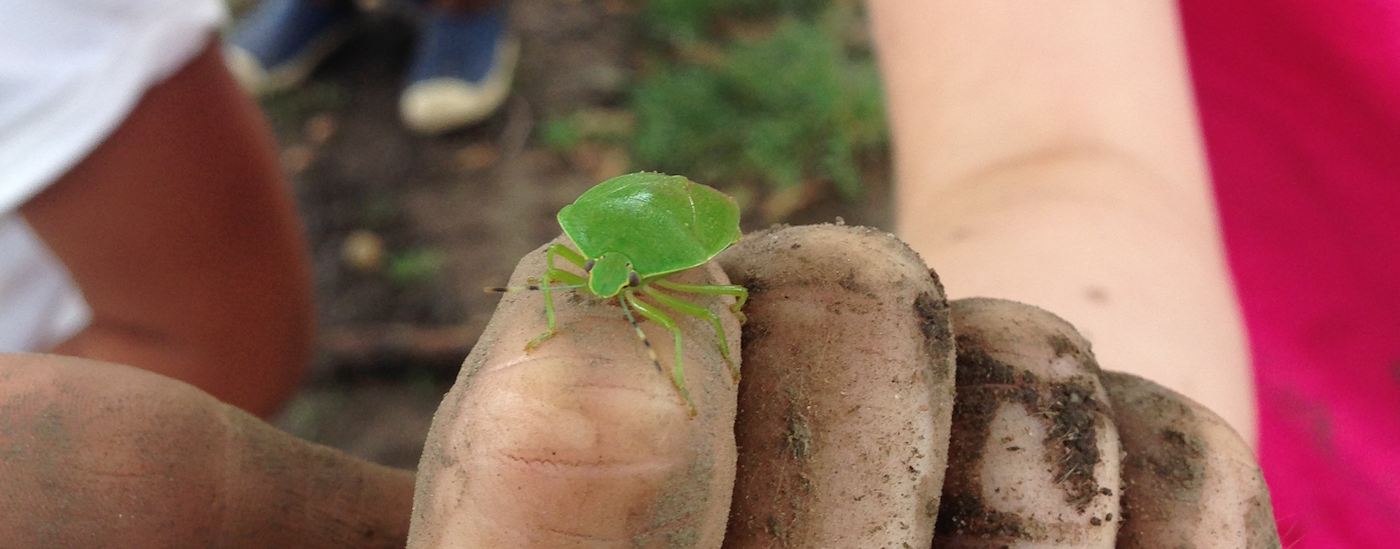Pick Up Sticks
-
Age: 0 to 2
-
Time: Under 1 hour
-
Materials: pillowcase, bucket or large container (optional)
- Skills: Curiosity, Behavioral Schema, Gross Motor
Pick Up Sticks Activity for Children
Sticks are, arguably, the number one toy of all time. Why? Reasons include that they are: plentiful, available in a variety of lengths and hefts, easy to gather (half the fun, really), portable, stackable, bang-able, throwable, and great to make things with. They morph easily into swords, stirrers, brooms, wands, antlers...you name it. There are virtually limitless ways to play with them. And, if you agree with the biophilia hypothesis that we are just wired to dig nature, kids are likely just wired to dig sticks.
So, how come some 0-2 year olds get really into stick play while others just pass sticks by? The reason is, in part, that kids just have different interests. However, given sticks’ truly universal appeal, it is largely because some kids are given the necessary access, modeling and space to play while others are not. As a parent of a wee one, it’s actually really easy to goof on one or more of these key conditions—we unwittingly do it all the time. Here’s a few tested ways to flip the script and unlock the stick player in your wee explorer.
The Guide
- Hang out under trees: Sounds obvious, but pick a spot with a plentiful and varied supply of sticks.
- Model the gathering: Your child may naturally rove around and pick up sticks. If so, you’re on your way. If not, they may not think to, so you can plant the seed. Rather than telling him what to do, start picking up sticks yourself. You are still the most interesting thing around, so your little guy will watch you (even if he runs around and appears not to do so).
- Hand her one or two: Without saying any more than “For you!” while looking most pleased, give your child two sticks to hold (one per hand). Then, move away and let her explore the sticks.
- Add some sound: Put out just a touch of repetitive sound, and you will increase kids’ interest in what you are doing without directing their play. How? Talk as little as you can, but repeat something rhythmic such as, “Pick up sticks [hit sticks together]...Pick up sticks [hit sticks together]...” Or, set a similar, simple phrase to Hi Ho the Dario or other familiar melody. Run DMC fan? Just start rapping, “It’s sticky…” as you pick up sticks. Whatever works for you.
- Make a pile: For many kids (and for good brain-building reasons) just moving the sticks from point A to point B is highly engaging. There is also a lot of good fun and learning in stacking them in piles or putting them into a pillowcase, basket, bucket or other container, especially if that container can, itself, get transported around!
- Play!: Chances are, your wee one is totally engaged in the gathering, moving and piling, and that is great. So, after a while, don’t interrupt their play and work, but start to model another level: playing with sticks. Stop moving and collecting and just start playing. Your wee one will likely follow. Here's a handful of our favorite ways to play with sticks, but we encourage you to invent your own!
- Make music by banging them together, on trees, rocks, earth, etc.
- Got soft ground (or mud)? Stick them in!
- Pile sticks up.
- Make a mini teepee fit for a mouse or squirrel.
- Line them up in rows or end-to-end in a long line and see if your wee one follows suit.
- Turn sticks into stirrers for mud or "soup."
- Lay down train tracks and start chugging.
- Give them time: Keep collecting and playing with sticks, even if it feels like it’s been a while to your adult brain. Kids warm up at their own speeds. And, with really little ones, you may just be planting a seed today, and it won’t be until next time you are in the park or yard that they’ll start actually doing what they are simply observing today.
- Be with the danger: We’ve seen parents hover and even intervene as soon as their little ones (quite naturally) start to wave, bang or (gasp!) hurl sticks. For kids, these seemingly “wild” or “aggressive” ways to play with sticks are satisfying, developmentally advantageous and, truly, not all that dangerous. The chances that kids this young would injure themselves or others are low. Further, they are simply not aware enough of their impact on others to be careful. Allow kids to manipulate sticks in as many ways and as vigorously as they would like to, only intervening when you think they’re truly endangering themselves or others. For example, let them toss sticks, but gently turn them if they start throwing towards another person and calmly say something like, “Not at our friends.” Eventually, they’ll get the idea, and you’ll eliminate the danger without interrupting the play.
Why is this activity great for kids?
Walking, stooping, grabbing and hauling sticks are all great ways to develop gross motor skills in young children. In addition to this body building, repeating the behavior of transporting objects around from place to place is actually one of a universal set of behaviors called behavioral schema which help to develop the brain. When you model the behaviors of looking around as well as picking up and exploring the objects around them, you are strengthening your kids' natural curiosity. Finally, by getting your wee one hooked on the all-powerful stick early on, you are introducing your child to a virtually endless “Top List” of things to play, imagine and make. What a gift!


